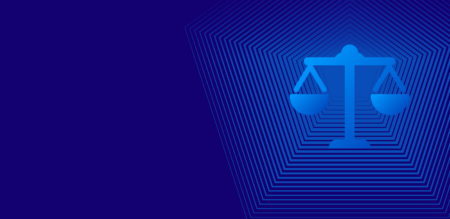Mitigating the Discovery Risks of Remote Workforces: Legalweek2021
And just like that, it's time for Legalweek2021! What a tremendous change since we last gathered in NYC. Instead of slogging through the wintery slush, endlessly hunting for an open table at the Hilton, and enjoying the fine dining at the Halal Guys food cart, we are now spending all day on Zoom, Microsoft Teams, Slack, and on our mobile devices. It’s truly mind-blowing to think that only 3% of us were daily participants in Zoom meetings in January 2020 compared to today.
However, the changes we have experienced are far too easily attributed to the pandemic. The reality is that this is an acceleration of a trend that we’ve spoken about in our Legaltech “Emerging Technology” panel for the past several years. We’ve discussed this as a “push” function of demographic shifts that have caused organizations to change the way they communicate and collaborate to address the demands and preferences of a new generation of employees and clients. It’s also a “pull” function, led by organizational adoption of platforms like Microsoft 365 and Teams as part of IT strategies of moving to the cloud.
The new reality is that the inability to get work done in a conference room or around a watercooler has changed the investment decisions around these technologies and tools from discretionary to mandatory. There’s simply no other way to get your job done.
Discovery and security in the age of collaboration tools
So, what did we learn in 2020? Here are a few key observations:
The move to the cloud is inevitable and irreversible
Every in-house technology platform (and e-discovery tool) on the planet buckled under the weight of a workforce that became 100% digitized in 2020. Judging by the recent results from Microsoft and others, the decision for many of embracing the cloud is much less about if, but increasingly about how fast can I get there.
Digital collaboration and conferencing tools have produced business results
The fact that tools like Zoom, Teams and Slack have become discretionary does not imply that they do not need to achieve positive results for the business. There are always alternative tools — including the less-than-optimal option of staying with the status quo of legacy technology. Data from 2020 does indicate that organizations have realized benefits including improved employee productivity, shorter sales cycles, and faster execution, as was discussed in a recent webinar we executed with Slack and highlighted in a pre-pandemic Forrester report on Microsoft Teams.
Innovation among collaborative platforms has accelerated
Collaboration, conferencing, and chat-enabled applications are all distinct, containing unique combinations of voice, video, persistent chat, app sharing and advanced analytics-driven features. Working from home has functioned to break product release cycles as new categories of users are pushing vendors to address new use cases. In some cases, new features are auto-released and defaulted on, creating a scramble for legal, compliance and risk teams after-the-fact to determine how these new capabilities can be controlled. Suffice it to say; this challenge will not be leaving us anytime soon.
Each new communication tool creates unique e-discovery, security and data protection risks
With differentiation comes greater complexity for those responsible for risk mitigation and e-discovery preparedness. Identifying, capturing, preserving and reviewing conversational information that can be interactive, alterable, encrypted and persistent can be the mixed-reality equivalent to what the View-Master was for email. (Unfortunately for some, technologies being used for e-discovery today were designed around the same time you could still buy a View-Master.)
Join us for a discussion at Legalweek
These changes are significant, which is why we will be diving into these observations at our LegalWeek round table discussion on February 3 at 2:00 p.m. EST, titled "Managing the Discovery Risks of the Remote Workforce.” We will bring together a panel of experts, including Anthony Diana from Reed Smith and Andrew Stokes from Bank of New York Mellon, to discuss how this has changed their businesses, and more importantly, how this has impacted their e-discovery programs. We'll ask them how they've adjusted processes to identify, collect, preserve and review these technologies that now proliferate across and within their remote workforces.
Share this post!
Smarsh Blog
Our internal subject matter experts and our network of external industry experts are featured with insights into the technology and industry trends that affect your electronic communications compliance initiatives. Sign up to benefit from their deep understanding, tips and best practices regarding how your company can manage compliance risk while unlocking the business value of your communications data.







Subscribe to the Smarsh Blog Digest
Subscribe to receive a monthly digest of articles exploring regulatory updates, news, trends and best practices in electronic communications capture and archiving.
Smarsh handles information you submit to Smarsh in accordance with its Privacy Policy. By clicking "submit", you consent to Smarsh processing your information and storing it in accordance with the Privacy Policy and agree to receive communications from Smarsh and its third-party partners regarding products and services that may be of interest to you. You may withdraw your consent at any time by emailing privacy@smarsh.com.
FOLLOW US